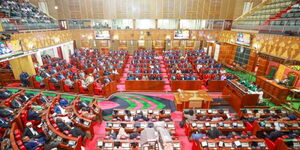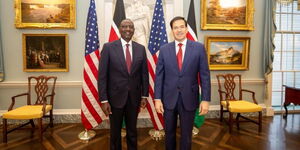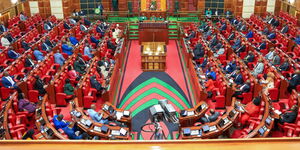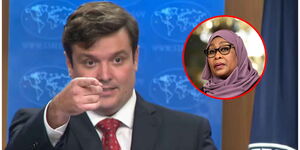As the world comes to terms with the passing of Pope Francis, the 266th leader of the Roman Catholic Church, questions have been raised about the process that takes place to bury a leader of his stature.
Pope Francis' passing was confirmed by Vatican News on Easter Monday at the age of 88 after a month-long battle with pneumonia, with attention now turning to the sacred rituals that follow the passing of a pope.
It is kind to note that a pope's burial process is far from ordinary, as it entails a ritual rich in symbolism and tradition.
After a pope's passing, the Camerlengo of the Holy Roman Church, Cardinal Kevin Farrell, confirms the demise by calling the pope by his baptismal name three times, after which he solemnly declares, "The pope is truly no more".
This is a tradition which has run for centuries and is one of the most symbolic acts that follows the removal and destruction of a Fisherman's ring, which is unique to each Pope in office.
Upon confirmation of his passing, the Vatican notifies the College of Cardinals and Catholic leaders, after which a nine-day mourning period, known as “Novemdiales," during which daily Masses will be held in the Pope's memory.
The Pope's funeral is typically expected to be held four to six days after his passing at St Peter's Square. The date of the funeral and burial is to be decided by the cardinals.
The late Pope's body will be washed, then dressed in red and white papal vestments before being placed in a dignified setting for public viewing. Thousands of faithful and other dignitaries are expected to pay their last respects at St Peter’s Basilica.
With a vacancy in the Pope's office, the College of Cardinals oversees the day-to-day activities during the period when normal operations are suspended, although their powers are extremely limited.
The public funeral mass, which will be held in St Peter’s Square, will serve as a spiritual farewell where the Pope's life will be honoured as well as his teachings and service to the church.
The three coffins
Finally, the Pope will be buried in line with a tradition involving three coffins – one made of cypress wood to represent humility, where the Pope's body will lie.
His body will be placed along with a white silk veil over his face, along with a lead tube containing a written biography detailing his life and legacy, which includes medals and coins minted during his reign.
After sealing of the cypress coffin, it will be placed within a second coffin made of zinc or lead. This coffin is airtight to represent the Pope's everlasting spiritual legacy.
This coffin will be enclosed in a third coffin made of oak wood.
This third coffin has an extremely strong outer layer to protect the other two coffins and is marked with a gold cross and the papal coat of arms.












